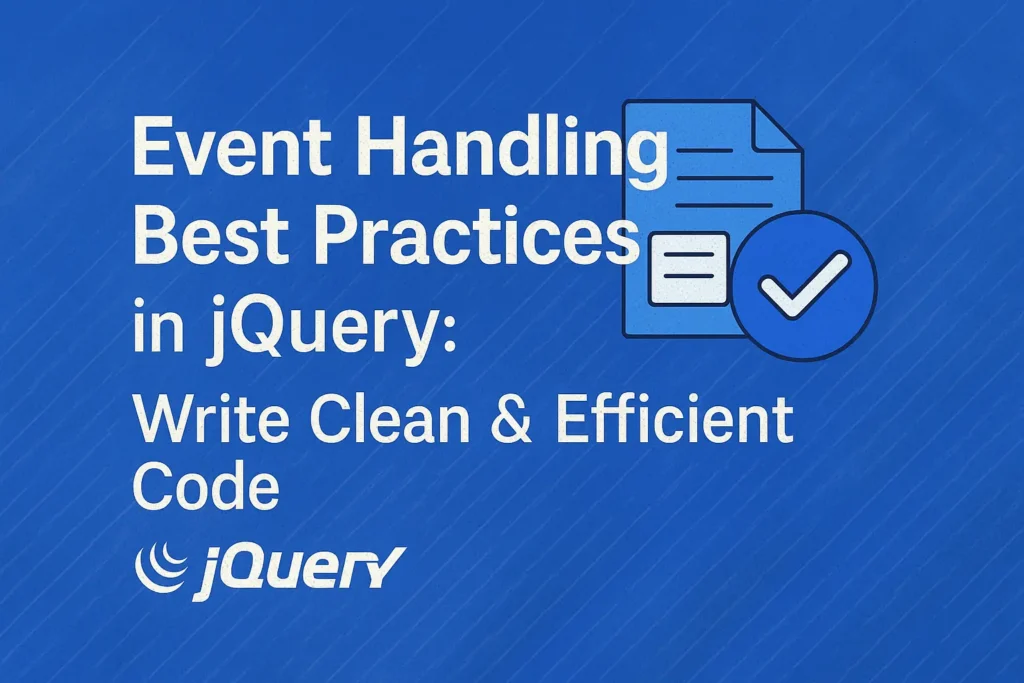Introduction
jQuery, the beloved JavaScript library, has revolutionized the way developers interact with HTML elements, especially when it comes to event handling. However, as projects grow in complexity, ensuring efficient event handling becomes paramount. In this article, we delve into the best practices for jQuery event handling, focusing on efficient binding techniques, event namespaces, and delegation for dynamic elements.
Efficient Event Binding Techniques
One of the key considerations when working with jQuery event handling is optimizing event binding to enhance performance. Instead of binding events directly to elements, consider using event delegation, where a parent element listens for events on behalf of its children. This approach minimizes the number of event handlers attached to individual elements, resulting in better performance, especially in large-scale applications.
Example:
// Direct event binding
$('#myButton').click(function() {
// Handle click event
});
// Event delegation
$('#parentElement').on('click', '#myButton', function() {
// Handle click event
});
Event Namespaces
Event namespaces provide a powerful way to organize and manage event handlers within a jQuery application. By assigning a namespace to event bindings, you can easily remove or update specific handlers without affecting others. This level of granularity enhances code maintainability and reduces the risk of unintended side effects.
Example:
// Binding events with namespaces
$('#myElement').on('click.myNamespace', function() {
// Handle click event
});
// Removing events by namespace
$('#myElement').off('click.myNamespace');
// Triggering events by namespace
$('#myElement').trigger('click.myNamespace');
Event Delegation for Dynamic Elements
In dynamic web applications where elements are added or removed dynamically, traditional event binding techniques may fall short. Event delegation comes to the rescue by allowing you to attach event handlers to parent elements that exist in the DOM at all times, even if their children are dynamically generated. This ensures that dynamically added elements inherit the event handling behavior without requiring explicit binding.
Example:
// Event delegation for dynamically added elements
$('#parentElement').on('click', '.dynamicElement', function() {
// Handle click event for dynamically added elements
});
Conclusion
Efficient event handling is crucial for maintaining the performance and scalability of jQuery applications. By adopting best practices such as event delegation, namespaces, and efficient binding techniques, developers can streamline their codebase, improve maintainability, and enhance user experience. Whether you’re working on a small project or a large-scale application, mastering jQuery event handling techniques will undoubtedly elevate your development skills.
Incorporating these practices into your workflow not only improves the efficiency of your code but also promotes better code organization and maintenance. As you continue to refine your jQuery development skills, remember to leverage the power of event delegation, namespaces, and efficient binding techniques to create robust and scalable web applications.






